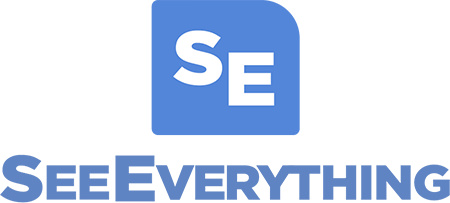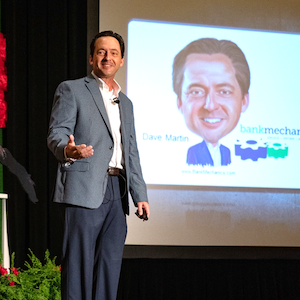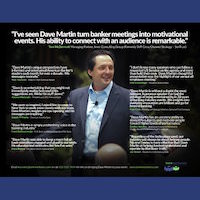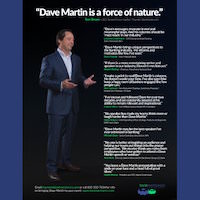 |
 |
Nothing destroys a good idea faster than a mandatory consensus. The lowest common denominator is never a high standard. » Jessica Hagy
Like... You Know
I was kidding with a friend recently about our reading lists. If you can profile a person by the books he reads, I’m not sure I’d want to know what my recent profile would say.
My last two books read were by Nobel Prize winning psychologist Daniel Kahneman… and Sammy Hagar. And truth be told, I gleaned useful information (seriously) from both.
When I came upon a column that cited some of Kahneman’s other works this week, I had to do a double-take. A particular statement was very close to something I’ve written about and used in presentations for about 15 years.
One of my oldest slides simply notes that when given a choice, people like doing business with people they know and like. I point out that “know and trust” has been programmed into our brains, but “like” almost always has to come before “trust.”
Plus, “trust” is not as immediately actionable as “like” is. “Get out there and make people trust you,” isn’t a very easily-actionable instruction.
Kahneman notes that people would rather do business with a person they like and trust rather than someone they don’t, even if the likeable person is offering a lower quality product or service at a higher price.
Now, that said, I would not suggest that a strategy of providing overpriced, inferior products and services – with a smile – is a winning one.
But his research does suggest that we may too often assume that customers are coolly analytical about their purchase decisions. Many tend to believe that a “better” (however that is defined) or less expensive product or service offers a clearly superior value proposition. This isn’t so.
The “best value” is highly subjective to most folks. Kahneman further suggests that one of the more universal increasers of happiness is spending time and/or associating with people we like. While that seems like a “Well, duh!” statement, too many folks seem not to grasp that fact.
We get caught up in product minutia and pricing and forget that most customers are more driven by how they feel about you and your company than in sterile economic decisions.
Do you have great products and services “on paper”? Sure. But the competition does as well.
What the competition doesn’t have is you.
Whether that is a positive, negative, or non-factor depends largely on what you are doing today.
A Pleasant Jolt
On the morning of my third day on a recent trip, I walked down to a corner coffee shop. I had been just a bit under-the-weather that week and figured a more industrial-strength caffeine jolt than my room’s coffee pot could deliver was in order.
When I walked in, I had to smile. The environment and personnel were out of “central casting” for a bohemian coffee shop.
I smiled even more broadly as I tried counting all the ways the place was “saving the planet.” Many would affectionately refer to the surroundings as “crunchy.”
The middle-aged woman working the counter really looked the part and from a distance, seemed too chatty for me on that slightly-beneath-the-weather and tired morning. As I stood there doing what everyone now does while waiting for more than 15 seconds – staring at my phone – I intentionally tuned out the conversations in front of me.
I felt little interest in chatting at that time and even less interest in hearing anyone else’s conversations. If there were a make-it-yourself option in the place, I would have taken it.
I just wanted to get a caffeine jolt and get on with my day.
When my turn arrived, the woman chirped, “Good morning stranger, what can I get you?” I gave my order and reached for my wallet.
She gave me my total and as I paid her, she asked “I’m right, aren’t I? I don’t think you’ve been in here before.” Trying to avoid being pulled into a conversation, I smiled and said, “No, I’m visiting on business.”
She lit up and said, “That’s great! How is your week going?”
The question wasn’t one I was ready for, and I paused while answering. She laughed, “Not sure yet? Wanna get back to me on that one tomorrow?”
I found myself chuckling and telling her that, yes, the week was going well and that I’d be heading home that day. This led to a brief conversation about where I was from, what I did for a living, and who I was working with in town.
In all, the entire interaction may have taken 60 seconds. But I left feeling oddly “at home” in that coffee shop after one visit.
And that employee found out more about me in 60 seconds than I would have thought possible on that particular morning. She refused to let a grump remain a grump and perked up my day as much as the caffeine jolt.
How are your customers’ weeks going? Find out and you may be surprised at how much you’ll learn.









